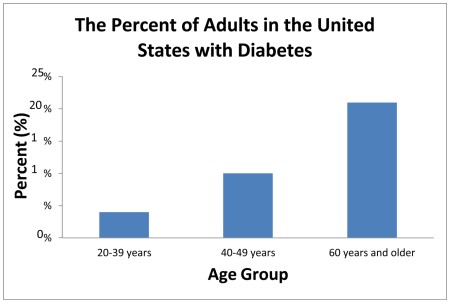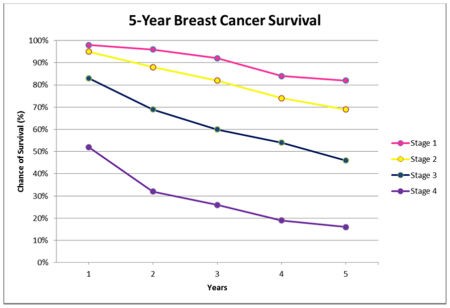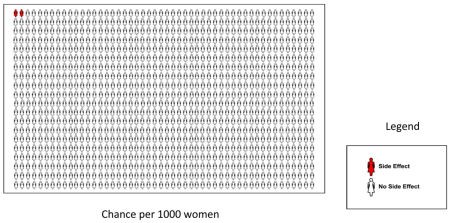Protocol - Health Numeracy
Description
The Numeracy Understanding in Medicine Instrument (NUMi) includes 20 items in 4 areas with 5 questions each, covering the topics of numbers, probability, statistics, and graphs. It measures basic and applied skills, such as problem solving and use of a food label. The protocol is administered via self-report questionnaire. The protocol is scored by determining total score based on categorizing scores into four levels: low, low average, high average, and high levels of numeracy as determined by score distribution in the study population.
Specific Instructions
The Working Group recommends that the administrator of the instrument ascertain what language is spoken in the home. The Numeracy Understanding in Medicine Instrument (NUMi) is highly dependent on literacy, so researchers should note that people with limited literacy will likely score lower, regardless of numeracy skills.
Availability
This protocol is freely available; permission not required for use.
Protocol
Numeracy Understanding in Medicine Instrument
1. James has diabetes. His goal is to have his blood sugar between 80 and 150 in the morning. Which of the following blood sugar readings is within his goal?
[ ] 55
[ ] 140
[ ] 165
[ ] 180
2. Nathan has a pain rating of 5 on a pain scale of 1 (no pain) to 10 (worst possible pain). One day later Nathan still has pain but it is better. Now, what pain rating might Nathan give?
[ ] 3
[ ] 5
[ ] 7
[ ] 9
3. Natasha started a new medicine and was given a handout showing the chance that side effects will occur as in the table below. Which side effect is Natasha least likely to get?
| Side Effect | Chance of Occurring |
| [ ] Dizziness | 1 in 5 people |
| [ ] Nausea | 1 in 10 people |
| [ ] Stomach pain | 1 in 100 people |
| [ ] Allergic reaction | 1 in 200 people |
4.Frank has a test to look for blockages in the arteries of his heart. The doctor said that a person with a higher percent (%) blockage has a high chance of having a heart attack. Which percent (%) blockage has the highest chance of a heart attack?
[ ] 33%
[ ] 50%
[ ] 75%
[ ] 98%
5. The doctor told Maria not to take more than 3 grams (g) of Tylenol a day. Each Tylenol pill is 500 milligrams (mg). What is the highest number of pills that Maria can take in one day?
[ ] 3 pills
[ ] 6 pills
[ ] 8 pills
[ ] 12 pills
6. A medical study will randomly assign people so that people are equally likely to get medicine A or medicine B. If there are 300 people in the study, about how many are expected to get medicine A?
[ ] 100 people
[ ] 150 people
[ ] 200 people
[ ] 250 people
7. David is 50 years old and smokes cigarettes. His doctor tells him that the chance of having a heart attack increases as people age and if they smoke. His current chance of a heart attack is 10% over the next 10 years. Which of the following is the best guess of David’s chance of a heart attack in the next 20 years?
[ ] 5%
[ ] 10%
[ ] 30%
[ ] 100%
8. James starts a new blood pressure medicine. The chance of a serious side effect is 0.5%. If 1000 people take this medicine, about how many would be expected to have a serious side effect?
[ ] 1 person
[ ] 5 people
[ ] 50 people
[ ] 500 people
9. The PSA (prostate specific antigen) is a blood test that looks for prostate cancer. The test has false alarms so about 30% of men who have an abnormal test turn out not to have prostate cancer. John had an abnormal test. What is the chance that John has prostate cancer?
[ ] 0%
[ ] 30%
[ ] 70%
[ ] 100%
10. Rebecca was treated for stage 2 breast cancer. The chance that the breast cancer will come back is 10% over the next 10 years. If Rebecca takes a new medicine, this chance will decrease by about 30%. Out of 100 women like Rebecca who take the medicine, how many will have breast cancer come back within 10 years?
[ ] 3 out of 100 women
[ ] 7 out of 100 women
[ ] 10 out of 100 women
[ ] 30 out of 100 women
11. A study found that chemotherapy decreased the risk of dying from colon cancer by about 30%. The study was 95% sure that the real benefit was between 10% and 50%. Which of the following is not in the expected range of benefit?
[ ] 11% decrease in risk
[ ] 30% decrease in risk
[ ] 45% decrease in risk
[ ] 95% decrease in risk
12. A study in arthritis patients found that medicine A decreased arthritis pain 10% more often than medicine B. The difference was not statistically significant. Which of the following best describes these results?
[ ] Medicine A and medicine B work equally well
[ ] Medicine A is proven to be better than medicine B
[ ] Medicine B is proven to be better than medicine A
13. A study found that a new diabetes medicine led to control of blood sugar in 8% more patients than the old medicine. This difference was statistically significant (p=0.05). The likelihood that this finding was due to chance alone is:
[ ] 1 in 5
[ ] 1 in 10
[ ] 1 in 15
[ ] 1 in 20
14. In general, the results of a randomized controlled trial will be more reliable if a larger number of people are in the study.
[ ] True
[ ] False
15. A survey asked a group of people about their exercise habits and followed them; over time. The study found that those who exercised 3 times a week or more lived an average of 2 years longer than those who did not. What did this study show?
[ ] Exercising causes people to live longer
[ ] There is a relationship between exercising and living longer
16. According to the graph below, what percent (%) of adults in the 40–49 year old age group have diabetes?
[ ] 5%
[ ] 10%
[ ] 15%
[ ] 20%

17. John had a fever. The doctor told him to come to the hospital if his temperature was above 102.5 F. Otherwise, John should take Tylenol and rest. If John’s temperature is as shown in the picture below, what should John do?
[ ] Take Tylenol and rest
[ ] Go to the hospital

18. A nutrition label is shown below. How many calories did Mary eat if she had 2 cups of food?
[ ] 140 calories
[ ] 280 calories
[ ] 560 calories
[ ] 680 calories
| Nutrition Facts Serving Size 1 cup (228g) Servings per Container 2 | |
| Amount Per Serving | |
| Calories 280 | Calories from Fat 120 |
| % Daily Value* | |
| Total Fat 13g | 20% |
| Saturated Fat 5g | 25% |
| Trans Fat 2g | |
| Cholesterol 2mg | 10% |
| Sodium 660 mg | 28% |
| Total Carbohydrate 31g | 10% |
| Dietary Fiber 3g | |
| Sugars 5g | |
| Protein 5g | |
| Vitamin A 4% | Vitamin C 2% |
| Calcium 15% | Iron 4% |
*Percent Daily Values are based on a 2,000-calorie diet. Your Daily values may be higher or lower depending on your calorie needs.
19. The graph below shows the outcomes of a group of women diagnosed with breast cancer. Andrea has stage 2 breast cancer. According to the graph, what is her chance of surviving 3 years after diagnosis?
[ ] 56%
[ ] 82%
[ ] 92%
[ ] 100%

20. Carol is taking a new medicine. The chance of a side effect is very small as shown in the graph below. What number best shows her chance of having a side effect?
[ ] 0.0002
[ ] 0.002
[ ] 0.02
[ ] 0.20

Scoring Instructions
The correct responses are in bold. The NUMi can be scored by determining the number correct out of 20 (Questions 4 to 23). The percent correct can provide a continuous measure of health numeracy ability with higher numbers indicating a higher level of numeracy. The following categorical scoring can also be used:
| Level of Health Numeracy | Score |
| Low | 0–7 |
| Low-Average | 8–12 |
| High-Average | 13–17 |
| High | 18–20 |
Personnel and Training Required
None
Equipment Needs
None
Requirements
| Requirement Category | Required |
|---|---|
| Major equipment | No |
| Specialized training | No |
| Specialized requirements for biospecimen collection | No |
| Average time of greater than 15 minutes in an unaffected individual | No |
Mode of Administration
Self-administered questionnaire
Lifestage
Adult
Participants
Adults
Selection Rationale
The Numeracy Understanding in Medicine Instrument (NUMi) protocol was selected because of its validity across diverse groups and because it is self-administered, validated, and has been compared with multiple existing measures.
Language
English, Spanish
Standards
| Standard | Name | ID | Source |
|---|---|---|---|
| Logical Observation Identifiers Names and Codes (LOINC) | PhenX - health numeracy protocol 280201 | 105506-0 | LOINC |
Derived Variables
None
Process and Review
Not applicable
Protocol Name from Source
Numeracy Understanding in Medicine Instrument (NUMi)
Source
Schapira, M. M., Walker, C. M., Cappaert, K. J., Ganschow, P. S., Fletcher, K. E., McGinley, E. L., … Jacobs, E. A. (2012). The Numeracy Understanding in Medicine Instrument (NUMi): A measure of health numeracy developed using item response theory. Medical Decision Making, 32(6), 851–865.
General References
Petrova, D., Kostopoulou, O., Delaney, B. D., Cokely, E. T., & Garcia-Retamero, R. (2018). Strengths and gaps in physicians’ risk communication: A scenario study of the influence of numeracy on cancer screening communication. Medical Decision Making, 38(3), 355–365.
Ross, K., Stoler, J., & Carcioppolo, N. (2018). The relationship between low perceived numeracy and cancer knowledge, beliefs, and affect. PLoS One, 13(6), e0198992.
Waters, E. A., Biddle, C., Kaphingst, K. A., Schofield, E., Kiviniemi, M. T., Orom, H., … Hay, J. L. (2018). Examining the interrelations among objective and subjective health literacy and numeracy and their associations with health knowledge. Journal of General Internal Medicine, 33(11), 1945–1953.
Protocol ID
280201
Variables
Export Variables| Variable Name | Variable ID | Variable Description | dbGaP Mapping | |
|---|---|---|---|---|
| PX280201_Health_Numeracy_Arthritis_Pain_Medicine_Effectiveness | ||||
| PX280201120000 | A study in arthritis patients found that more | N/A | ||
| PX280201_Health_Numeracy_Blood_Pressure_Meddicine_Chance_Side_Effect | ||||
| PX280201080000 | James starts a new blood pressure medicine. more | N/A | ||
| PX280201_Health_Numeracy_Blood_Sugar_Reading_Goal | ||||
| PX280201010000 | James has diabetes. His goal is to have his more | N/A | ||
| PX280201_Health_Numeracy_Breast_Cancer_Chance_Recurrence | ||||
| PX280201100000 | Rebecca was treated for stage 2 breast more | N/A | ||
| PX280201_Health_Numeracy_Breast_Cancer_Three_Year_Survival | ||||
| PX280201190000 | The graph below shows the outcomes of a more | N/A | ||
| PX280201_Health_Numeracy_Chance_Heart_Attack_Twenty_Years | ||||
| PX280201070000 | David is 50 years old and smokes cigarettes. more | N/A | ||
| PX280201_Health_Numeracy_Colon_Cancer_Death_Decreased_Risk | ||||
| PX280201110000 | A study found that chemotherapy decreased more | N/A | ||
| PX280201_Health_Numeracy_Diabetes_Medicine_Effectiveness_Significance | ||||
| PX280201130000 | A study found that a new diabetes medicine more | N/A | ||
| PX280201_Health_Numeracy_Exercise_Diabetes_Percent_Read_Graph | ||||
| PX280201160000 | According to the graph below, what percent more | N/A | ||
| PX280201_Health_Numeracy_Exercise_Habits_Life_Expectancy | ||||
| PX280201150000 | A survey asked a group of people about their more | N/A | ||
| PX280201_Health_Numeracy_Fever_Temperature_Action_Taken | ||||
| PX280201170000 | John had a fever. The doctor told him to more | N/A | ||
| PX280201_Health_Numeracy_Highest_Heart_Attack_Chance | ||||
| PX280201040000 | Frank has a test to look for blockages in more | N/A | ||
| PX280201_Health_Numeracy_Highest_Pills_Per_Day | ||||
| PX280201050000 | The doctor told Maria not to take more than more | N/A | ||
| PX280201_Health_Numeracy_New_Medicine_Side_Effect_Chance | ||||
| PX280201200000 | Carol is taking a new medicine. The chance more | N/A | ||
| PX280201_Health_Numeracy_Nutrition_Label_Calorie_Interpretation | ||||
| PX280201180000 | A nutrition label is shown below. How many more | N/A | ||
| PX280201_Health_Numeracy_Pain_Scale_Pain_Rating | ||||
| PX280201020000 | Nathan has a pain rating of 5 on a pain more | N/A | ||
| PX280201_Health_Numeracy_Randomized_Controlled_Trial_Size | ||||
| PX280201140000 | In general, the results of a randomized more | N/A | ||
| PX280201_Health_Numeracy_Receive_Medicine_Likelihood | ||||
| PX280201060000 | A medical study will randomly assign people more | N/A | ||
| PX280201_Health_Numeracy_Side_Effect_Likelihood | ||||
| PX280201030000 | Natasha started a new medicine and was given more | N/A | ||
| PX280201_Health_Numeracy_Test_Blood_Chance_Prostate_Cancer | ||||
| PX280201090000 | The PSA (prostate specific antigen) is a more | N/A | ||
Measure Name
Health Numeracy
Release Date
May 11, 2020
Definition
The Health Numeracy measure assesses the degree to which an individual has the capacity to understand and apply health information conveyed with numbers, tables, graphs, probabilities, and statistics.
Purpose
Health numeracy facilitates informed health decisions and is essential for effective communication with health care providers and management of some chronic conditions. Health numeracy has been associated with self-efficacy, improved self-management of chronic disease, and assessment of values in the context of shared decision making.
Keywords
National Cancer Institute, NCI, National Institutes of Health, NIH, Numeracy Understanding in Medicine Instrument, NUMi
Measure Protocols
| Protocol ID | Protocol Name |
|---|---|
| 280201 | Health Numeracy |